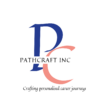In the evolving modern organizations, where strategy, culture, and capability intersect, HR Business Partners (HRBPs) have become more than conduits of policy. They are now architects of alignment—tasked with harmonizing people strategies with business outcomes.
There’s a reason the role carries the title “Business Partner.” It’s not ornamental. It’s intentional.
The expectation is not only to understand people—but to enable performance. Not only to protect the organization—but to propel it forward. To do so, HRBPs must balance business delivery, ethical integrity, and strategic value creation—all while walking a tightrope between support and influence. But this value cannot be conjured from thin air. Like any enduring structure, true partnership is built on a strong foundation—a layered base that gives the HRBP role its depth, resilience, and impact.
The Three Pillars of Effective HRBP Practice
Just like a thoughtfully constructed building, the HRBP role must be built in a deliberate sequence. Skip a layer, and the structure weakens. Get the order right, and the potential becomes transformational.
1. Knowing HR: The Foundation of Credibility
The first layer is non-negotiable. Before one can influence or advise, there must be technical mastery—a deep and dependable understanding of the HR function itself. This includes not just policies, but principles. Not just compliance, but context.
When HRBPs understand the discipline—talent, performance, engagement, compensation, DEI, and more—they begin to earn credibility. That credibility becomes their passport to deeper conversations. Without it, even the best intentions fall flat.
2. Knowing the Business: The Bridge to Trust
The second layer connects HRBPs to the operational heartbeat of the organization.
Here, they move beyond functional comfort zones to understand how the business actually works—its strategy, goals, pain points, and pressures. This is not about becoming a pseudo-CEO but about speaking the language of the business fluently enough to be heard and wisely enough to be trusted.
Business knowledge is the bridge. It transforms HR from a service centre to a strategic partner.
3. Adding Value: The Result of Readiness
Finally, when the first two pillars are firmly in place, HRBPs can do what they set out to do: add real value. They’re no longer responding to requests—they’re anticipating needs. They’re not waiting for alignment—they’re creating it. This is where insight meets influence and where HR truly becomes a lever for performance, culture, and growth.
But—and this is key—value is not a starting point.
It is the outcome of the journey. The summit was reached after careful ascent.
What We Build and How We Build It
Great HR Business Partners are not born. They are built—carefully, intentionally, and over time.
They build themselves on the foundation of their own expertise.
They connect by learning the rhythm of the business.
And only then do they unlock the ability to truly lead, shape, and elevate.
Know HR. Know the Business. Add Value.
That is the order. That is the art. That is the partnership.
At Pathcraft Inc., we do detailed workshop with HRBPs to help them be a practical guide to being your organization’s strategic people expert. Reach out to us on contact@pathcraftinc.com for more information.



